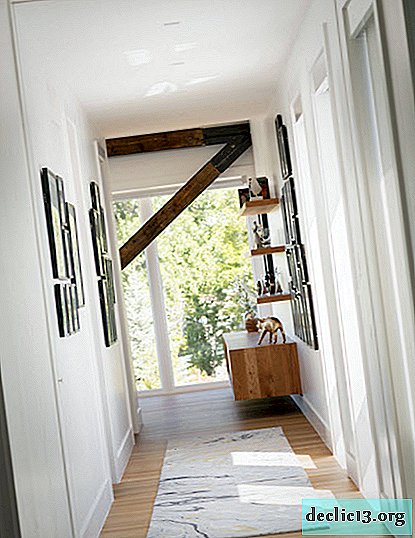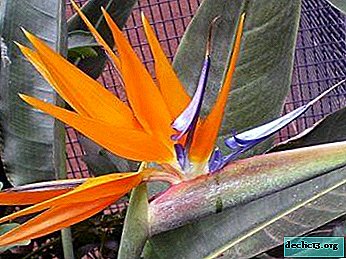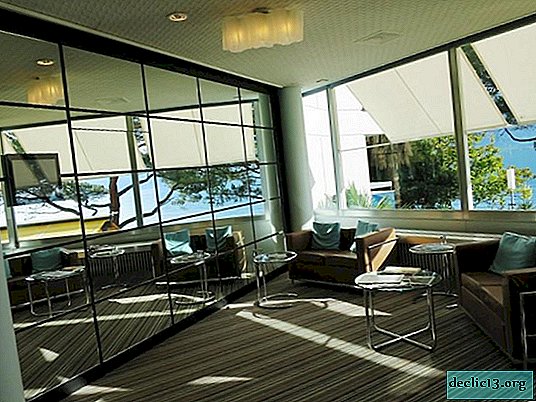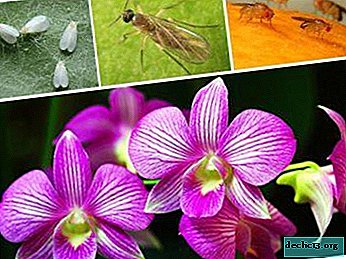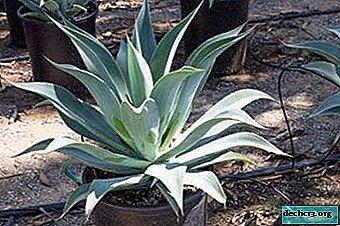How to prepare primrose for winter?
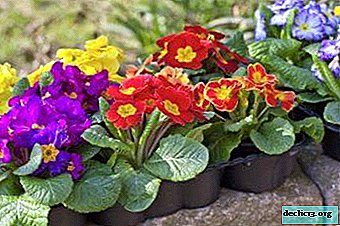
Primrose is represented by a huge variety of several hundred varieties, among which there are both natural varieties and created by the efforts of breeders. The largest number of wild species lives in the northern hemisphere, where moderate climatic conditions prevail.
Primrose loves to settle near the water, along the banks of rivers, on lakes, as well as on meadows and mountain slopes. You can see the flower on the Himalayan massif. The plant is an evergreen perennial, happens both bush type, and grassy.
What to do in the fall?
Primulas are not so afraid of low temperatures as temperature differences and root rot. Differences, as a rule, occur from the difference between day and night temperatures, as well as during the alternation of thaws and sudden cold snap. Subcooling of primrose in winter with non-compliance with standards or decay from excess moisture can lead to loss of germination.
Intensive spring sun is also dangerous, it can burn primrosenot yet adapted after hibernation. The best protection against cold and the guarantee of climatic stability in the root zone is, of course, snow, but it is not always enough to provide the necessary degree of protection.
Therefore, in addition to temperature extremes and cold weather, they create a shelter from the ground with humus and a layer of spruce branches on top. With a very large thickness of snow cover there is a risk of overheating.
From wintering during the winter, holes are periodically beaten in the snow with a pitchfork to create air access to the plant. When the melting begins in the spring, then due to the same risk of the plant mashing, it is necessary to partially clear the icy crust of the infusion.
Many varieties have frost resistance properties and can completely winter without special insulation-shelter, but there are hybrid species that are generally not predisposed to winter in the open ground. They are removed from the soil for a period of low temperatures and sent for storage in containers, to rooms with special conditions.
Do I need to trim the leaves?
Is this flower pruned for winter? If phlox and peonies for the winter deprive the aerial parts, then with primrose it is strictly forbidden. After flowering, the primrose rosette often fades and does not create the most aesthetic appearance, but the foliage is not cut, because for primrose it is a natural shield for cold weather from winds and low temperatures.
Advice! Dry foliage is harvested only in the spring, when the snow cover comes off and the plant is opened.More information about transplanting and caring for primrose in the fall can be found here, and from this article you will learn how to properly plant the plant.
How to sow correctly?
 There are varieties of primroses, for example from the candelabrum group, which breed naturally, just for this purpose dry flowers are not removed, leaving seeds for ripening, which self-seeding master additional areas of habitat, often crowding out other plants.
There are varieties of primroses, for example from the candelabrum group, which breed naturally, just for this purpose dry flowers are not removed, leaving seeds for ripening, which self-seeding master additional areas of habitat, often crowding out other plants.
Such properties are possessed, for example, by the Tibetan primrose and the primrose Akaulis. The seeds of these varieties can simply be scattered where it would be desirable to have such flowers, a little nourishing and loosening the soil. And it is better to wait until the plant makes self-sowing and transplant the seedlings that have been planted in the spring.
If we are talking about other varieties, then you have to try a little. In general, seed primrose develops more slowly, require more attention and time for care.
What is important to consider?
- Seed germination decreases with the loss of freshness, so additional measures will be required.
- It is dangerous to irrigate with hard water, this creates the risk of loss of germination.
- In heat, the seeds also lose their potential for germination; for effective germination, coolness is necessary. The temperature should not exceed 17 degrees, the optimal mode is 10-15 degrees.
- Humidity should be above average.
- Good lighting is important, if necessary, do backlighting with a light bulb.
- Mostly sown in November, December or January, and hybrids with a short development period are sown in February-March. From the time of sowing to the beginning of flowering, it usually takes about six months or a little less. On average, the optimal project implementation time falls in November-December.
Under normal conditions, seedlings hatch for 10-11 days. After that, you can slightly reduce humidity and temperature. Around March 15, young seedlings are transplanted into separate pots. And in just a few weeks, in May, they are transported to street conditions, on open ground.
Read more about the timing of sowing and other features of planting perennial primrose read here.
Seed Growing Instructions
How to prepare?
If it is not possible to collect seeds, then you can buy them in the store by choosing a variety. It should also be noted that many varieties of primroses during seed sowing require preliminary exposure to cold, which is the key to successful germination. To do this, they are kept in the refrigerator for a month.
 There is also a faster option for temperature preparation. Five times, in a single course, placed for two hours in the cold and two hours in the heat. To activate germination, a biostimulating procedure can be carried out by holding the seeds before sowing in aloe juice for twenty minutes.
There is also a faster option for temperature preparation. Five times, in a single course, placed for two hours in the cold and two hours in the heat. To activate germination, a biostimulating procedure can be carried out by holding the seeds before sowing in aloe juice for twenty minutes.
Before sowing, slightly dry the seedby spreading over an absorbent paper or sponge surface.
Material options for sowing seeds:
- lay an even layer of snow on the substrate layer and distribute the seeds from above;
- distribute seeds on the surface of moistened soil;
- small-seedled primroses, such as Siebold and Aurikul, are sown on a small layer of vermiculite and sprayed from the atomizer;
- in peat tablets.
Landing
Important! Seeds are easier to distribute with a thin, inflexible wire or toothpick.- If the seeds are small, then per square centimeter should be no more than five pieces.
- Large seeds are laid out through a centimeter from each other.
- One peat tablet should have no more than two seeds.
In the final part, the seeds are slightly pressed and sprayed with soft, settled water. Next, the container is covered with a transparent film-lid, making a greenhouse.
Watering
The drying substrate is regularly moistened by spraying.. When sprouts appear, you can water them with a syringe without a needle. If there is a drain pan and drainage holes in the container, it is better to water from below.
Growing
The greenhouse should be regularly ventilated so that there is no condensation, as the seedlings will rot due to excess moisture. When the seedlings grow a couple of leaves, they are dived into the soil mixture. Land requirements for planting: nutritious, loose, air-light soil.
 It should include turf soil, peat, universal soil. 30% or 50% of the sphagnum crushed with sand and perlite will provide the necessary air permeability, friability and moisture resistance.
It should include turf soil, peat, universal soil. 30% or 50% of the sphagnum crushed with sand and perlite will provide the necessary air permeability, friability and moisture resistance.
Disinfection: the mixture is calcined for half an hour in the oven. 24 hours before sowing do soil moistening.
After this, seedlings begin to be fed with mineral compounds, once every ten days. As the seedlings develop, they add soil. When the sprouts get stronger and develop, the weak are harvested, and the strong are planted in separate pots.
The primrose is ready for transplanting into the open ground after it reaches a size of 10-20 cm.
Learn more about growing primrose from seeds here.
Frost resistant plant
To organize the correct wintering of the flower, a clear and timely adherence to the sequence of stages of preparation is required. Start cooking primrose after flowering.
- At the first stage, they do general cleaning of the flower garden, removing garbage, plant fragments, dry twigs and any waste that is present, since during wintering they can create unsanitary conditions, start to rot, or be carriers of pathogenic spores, parasitic pests and cause damage to the plant .
- Before winter, they make water-charging watering, moistening the soil well.
- Aerate the soil, making loosening of the hole around the primrose. This will additionally protect against waterlogging during thawing periods and create more healthy conditions.
- When stable frosts occur at night, they proceed to the next stage of preparation. On average, this time falls in mid-autumn. Under the bush make humus, scattering it around the outlet, a little more than the diameter of the space, which the roots supposedly occupy.
Sprinkle the plant first with a small layer of humus, and then with a layer of soil, or one of them, to protect it from the cold. Make sure that the top of the outlet remains in sight.
- A sufficient amount of snow is a shelter in itself, but a sufficient thickness of the snow layer is not always formed, and in this case the primrose bushes are covered with fir spruce branches. Shelter is covered with lapnik at the stage of cooling to -10 degrees.
Shelter material is taken only dry and clean for the same reason. Shelter is done like this - several spruce paws are placed with a low hut and secured with a rope. Instead of spruce branches, twigs or shoots of berry bushes can be used.
- When the winters are not snowy, you can artificially redistribute the snow cover. For comfortable conditions, the plant usually needs from 25 to 70 cm of snow cover.
In a snowless winter, such a plant is at risk of freezing, and therefore it is necessary to cover the roots in advance with a nutrient layer of soil.
Features of storing some varieties in special containers at home
Root preservation
 After the primrose blooms, if it is not a frost-resistant variety, then usually the plant is dug up, foliage and stems are removed, and the root part is stored in a container with sphagnum, in the coldest compartment of the refrigerator.
After the primrose blooms, if it is not a frost-resistant variety, then usually the plant is dug up, foliage and stems are removed, and the root part is stored in a container with sphagnum, in the coldest compartment of the refrigerator.
This temperature is important so that the primrose does not move into the premature development of the leaves. If this still happened, you will have to drop it in a pot and keep it in a cool place. In warmth and in low humidity the flower threatens death.
Wintering the whole plant
You can remove the primrose from open ground and transplant it into a container, taking a volume two times the aboveground volume of the primrose:
- The root system is cleaned of the old soil extremely carefully so as not to damage the thin parts, because they are more fragile.
- Then the primrose is planted in a special composition from the soil for indoor flowering plants, mixed with sand, one to one.
- The root neck in this case is not deepened.
Care
Only watered with a mild type of water. When the soil settles, pour a layer. Put the pot in a place where the temperature is + 12-15 ° C, with moderate illumination. You can maintain the necessary humidity with a regularly ventilated greenhouse.
With such care, the plant will survive the winter safely and in May it will already be possible to send it to the garden. Primrose transplantation is fairly easy.
Recommendation! After landing in the wild, they are watered very restrained, but without drying out.Read about other features of primrose care here.
The cultivation of primrose is accompanied by various important nuances of care, one of the most important is the preparation of the plant for winter, the vitality and quality of flowering depends on the quality of this stage of care.
It is necessary to carry out the procedure according to all the rules and then the plant will bring beautiful flowers for many years, decorating the garden.



